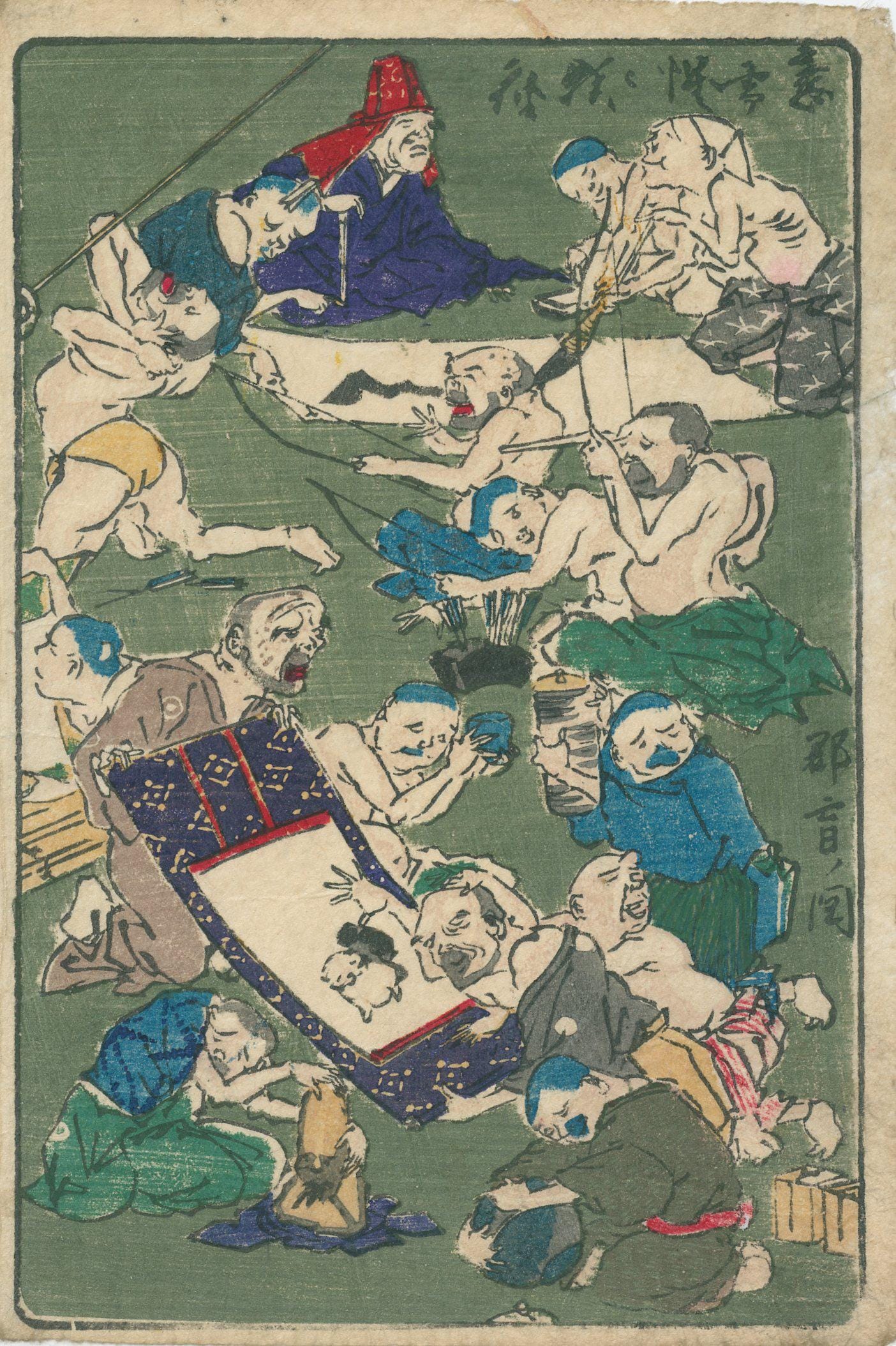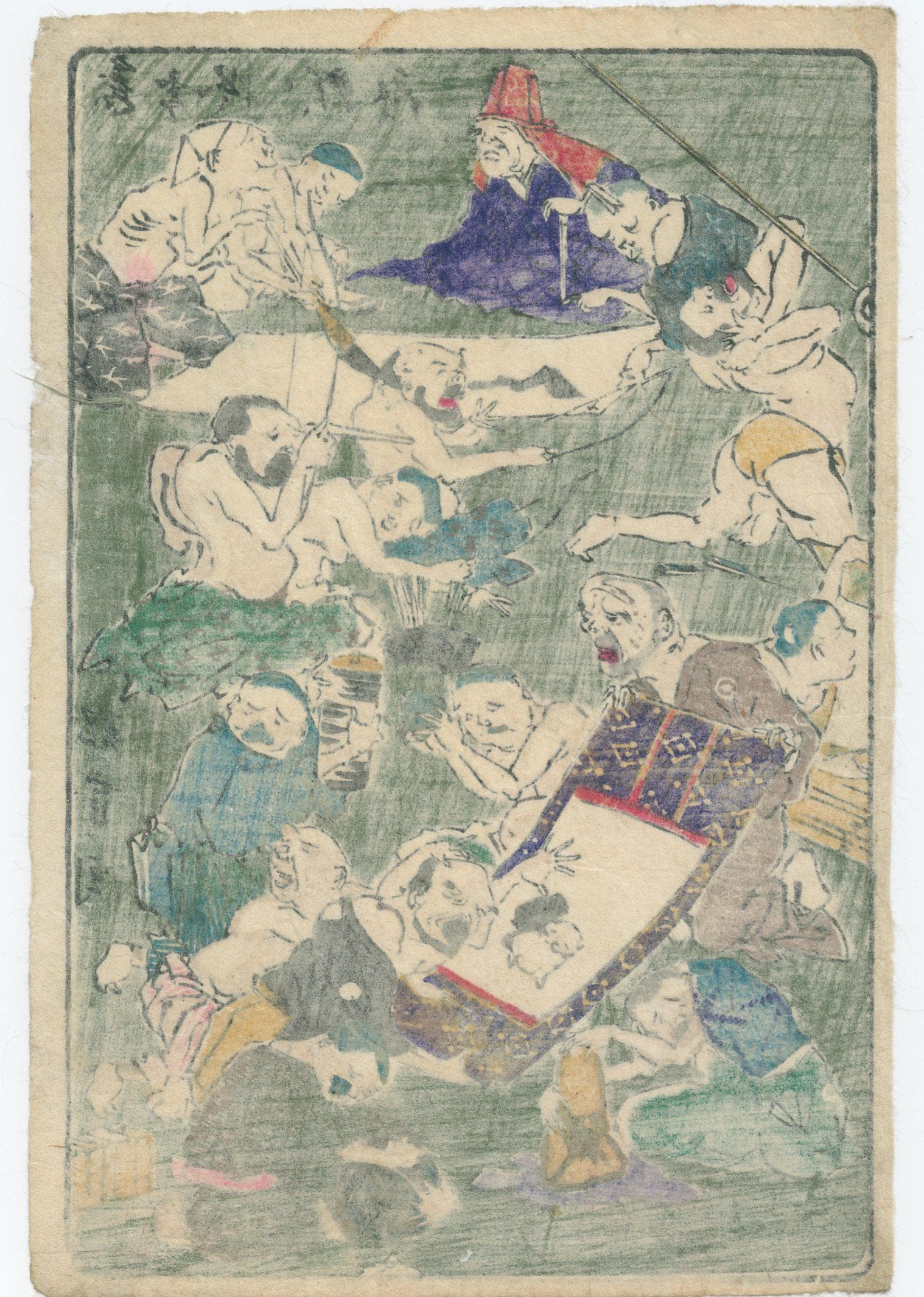Kawanabe Kyosai woodblock A Gathering of Blind Men (群盲の図, Gunmō no zu), Edo satire 1863–66
$306.53 $340.59
Artist: Kawanabe Kyosai (1831–1889)
Series: One Hundred Pictures by Kyosai (暁斎百図, Kyosai Hyakuzu)
Date: ca. 1863–1866 (late Edo period)
Publishers and editions: the series was issued twice in the 19th century — first as single sheets in the 1860s (Wakasaya Yoichi), and later as an album reprint in the 1880s (Okura Magobei)
Format: chūban (approx. 13 × 18 cm)
Medium: polychrome woodblock print (nishiki-e) on handmade washi paper
This composition depicts a chaotic assembly of blind men engaged in animated conversation and mutual examination. Some touch objects and each other, others argue or gesticulate wildly, while a seated elder in a red court hat observes the disorder with detachment.
The scene combines physical comedy with social satire, turning what might seem a moral anecdote into a grotesque portrayal of human folly. Kyōsai’s use of overlapping figures and contrasting gestures gives the image a theatrical rhythm reminiscent of Edo street performance and kyōgen humor.
Context and Interpretation
In Edo-period visual culture, depictions of blind men (mōjin) often referred to organized guilds of blind masseurs (anma) and musicians. Kyōsai transforms this theme into a comic social allegory, highlighting confusion, mimicry, and collective delusion.
While the motif recalls the Buddhist parable of the blind men (群盲), there is no elephant or specific moral lesson here — only the artist’s fascination with the absurdity of human argument and the collapse of reason.
Shipping
Safe and tracked shipping from Latvia
For US buyers: this item enters the United States duty-free.


